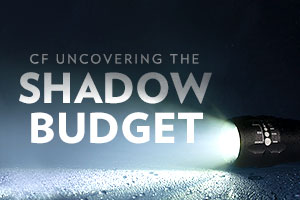Media

The Shadow Budget Comes to Light
The shadow budget is coming into the light in an unlikely way this budget season. When state budgets are tight, it’s common for lawmakers to “discover” new sources of revenue, much like finding some spare change in couch cushions. These “discoveries” are rare when the state is enjoying above-estimated revenues, as Pa. is this year. Yet one senator is now making his case.
Sen. Vincent Hughes is planning to introduce two pieces of legislation to provide $125 million towards emergency school repairs. The first bill would use surplus revenues to cover the costs, while the second bill would tap the shadow budget to pay for repairs.
The shadow budget is comprised of over 150 special funds that have their own revenue sources or receive transfers from the General Fund. The name “shadow budget” is derived from the fact that despite being almost twice the size of the General Fund, its reserves are often ignored in budget negotiations.
In 2017, a group of House Republicans proposed a transfer of $1.2 billion from the shadow budget to balance the General Fund and avoid tax increases. Our analysis shows these fund transfers represented just 14 percent of the total reserves available. Yet Governor Wolf claimed these reserves were already committed.
Eventually the legislature acknowledged the existence of shadow budget reserves and agreed to transfer $300 million to the General Fund, leaving the specifics up to the governor. But, instead of a shadow budget transfer, the governor borrowed money and leveraged the state’s Farm Show Complex. In other words, the Commonwealth took on more debt instead of using existing taxpayer dollars.
To have an accurate picture of Pennsylvania’s fiscal health for 2019–2020 and beyond, we should acknowledge the billions of spending and reserves contained in the shadow budget.